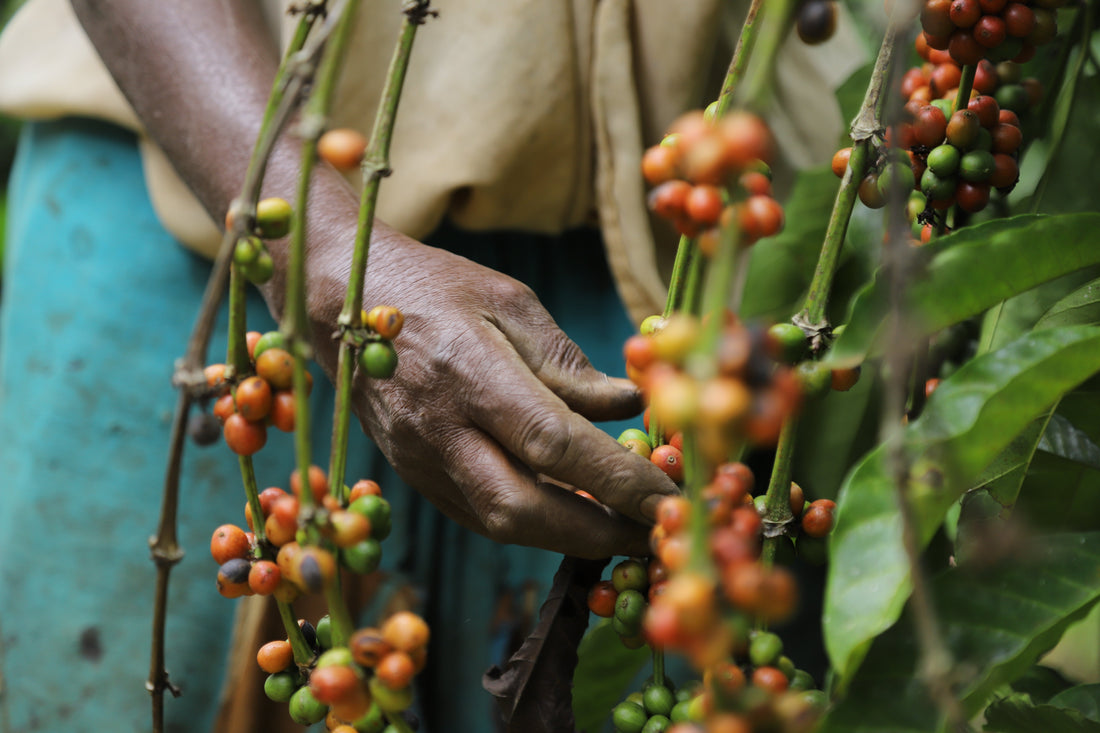A Brief Coffee Timeline.
We've been sleeping on half of the world's coffee.
We have all seen 100% Arabica proudly stamped on a coffee bags, and on boards in coffee shops. We've been told it is the best.
But here’s something most people don’t know:
Arabica is only half the story.
The other half? Is Robusta.
It makes up 40–45% of all the coffee in the world.
Most people have been drinking Robusta for years without realising it. It’s usually blended into supermarket or instant coffee. But rarely called out. And rarely celebrated.
So how did it come to be that nearly half the world's coffee has been kept in the shadows?
To understand a story, you have to know how it began...
Here we take you back to the beginning of coffee.
A timeline. It's short and sweet - the double-espresso-and-one-sugar version of coffee's history.
You will see, Robusta has been in the room for decades – just never invited to speak.
~9th Century
Coffee is discovered growing wild in Ethiopia.
People begin chewing the beans for energy.
They were onto something great.
15th–16th Century
Coffee is first cultivated and traded in Yemen.
Farmers grow Arabica, and Yemeni traders export it through Middle Eastern ports.
17th Century
Coffee reaches Europe via trade routes from Yemen.
Europe falls in love with coffee – specifically Arabica. It’s the only variety they know.
17th–18th Century
European colonial powers (like the Dutch, French, British, and Portuguese) introduce Arabica to their colonies – including Latin America, East Africa, and Asia, planting it on high‑altitude farms.
⚠️ Robusta is not part of this story yet.
Late 1800s
Robusta is discovered in Central and West Africa.
It thrives in lowland, hotter, more humid areas – places where Arabica struggles.
It’s more resistant to disease (they don’t call it “robusta” for nothing) and it’s higher in caffeine.
Early 1900s
Robusta begins being cultivated at scale – especially in places where Arabica failed due to disease.
Mid‑1900s onward
Robusta becomes widespread – but mostly used in instant coffee or as a cheap filler in Arabica blends.
It’s perceived as bitter, so it’s not valued for flavour, and almost never processed or graded to specialty standards.
Trade systems, flavour and scoring tools are still built entirely around Arabica.
The systems were built for one kind of coffee — and Robusta didn’t fit the mould.
1980s–2000s
The specialty coffee market booms – especially in the US, Europe, and Australia.
Arabica dominates.
Robusta is excluded from this story – still seen as “inferior.”
2000s–2020s
Climate change, rising global demand, and some quality improvements spark very tiny, early interest in Robusta.
A few producers and roasters begin treating Robusta more seriously – experimenting with better processing and traceability.
Robusta isn’t new. But the way we treat it can be.
2020s–2024
Robusta makes its first real inroads:
- A small handful of producers (like Blue Turaco) begin producing 100% specialty‑grade Robusta.
- Robusta appears – rarely – in high‑end cafés and competitions.
- 2024: The first‑ever Robusta Flavour Wheel is published — a major milestone.
This is not a trend. It’s a turning point.
Still, the shift is tiny.
The specialty coffee world remains focused on Arabica – and most drinkers have never even heard of Robusta.
The Next Chapter: Why We’re Championing Robusta
- It gives us a whole new set of flavours to enjoy – bold, rich, and undiscovered!
- It’s climate‑resilient, and can grow where Arabica is struggling.
- It offers the other half of the world’s coffee farmers a real chance at better prices and recognition.
And with global demand forecast to outstrip supply by 2050, Robusta isn’t just part of the solution — it is the future.
That’s why we’re championing it.
It’s time.
*
Further Reading & Sources
If you'd like to dig deeper, here are some of the sources we drew from – and a few worth exploring:
- Uncommon Grounds by Mark Pendergrast – A sweeping history of coffee.
- International Coffee Organization – www.ico.org
- Specialty Coffee Association (SCA) – Resources on coffee grading and origins
- Coffee Quality Institute – Robusta Flavour Wheel & Sensory Lexicon (2024)
- World Coffee Research – Studies on Arabica vs. Robusta and climate resilience
- The Coffee Guide (4th edition) – Global coffee production & market insights
- Global Coffee Platform – Coffee & sustainability reports
- FAO & IPCC reports – The future of agriculture and climate impacts on crops


